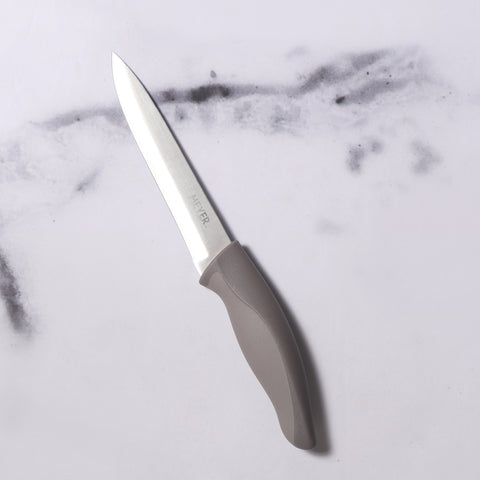Key Features & Uses
- Triply Construction (Stainless Steel–Aluminium–Stainless Steel)
Ensures faster and uniform heating while preventing food from sticking or burning.
- 100% Nickel-Free Stainless Steel Cooking Surface
Non-reactive, safe for acidic foods, and ideal for long-term health.
- 28cm Flat Surface
Large enough for dosas, chillas, flatbreads, pancakes, and more.
- Sturdy Riveted Handle
Provides a firm, heat-resistant grip for safe and confident handling.
- Induction and Gas Compatible
Works effortlessly on all cooktops — gas, induction, ceramic, halogen, and more.
- Oven-Safe and Metal Utensil Friendly
Durable enough to handle high heat and frequent use.
Why Choose Meyer Trivantage Flat Tawa?
The Meyer Trivantage flat tawa gives you the perfect combination of performance, safety, and durability. Its triply construction ensures even heating from edge to edge — ideal for recipes that require uniform cooking and crisp textures. Unlike coated cookware, this tawa has no chemical layers that degrade over time, making it one of the best stainless steel tawas for everyday cooking.
Benefits & Advantages
- Quick, even heating that reduces cooking time
- Nickel-free surface — safer for long-term use
- No harmful coatings or synthetic layers
- Great for oil-free or low-oil cooking
- Easy to clean and extremely durable
- Ideal for both Indian and Western-style recipes
Flat vs. Curved Tawa: What’s the Difference?
A flat tawa, like the Meyer Trivantage, offers a large, level cooking surface that ensures uniform contact with heat — ideal for dosas, pancakes, parathas, and crepes where spread and crisping are essential. In contrast, a curved tawa (or concave tawa) is slightly bowl-shaped, helping to contain oil and batter — making it more suitable for phulkas or puffed rotis where central heat concentration is preferred.
If you're aiming for even browning, crisp edges, and large cooking areas, a flat tawa is the better choice.
Stainless Steel vs. Cast Iron vs. Non-Stick Tawa
- Stainless Steel Tawa: Long-lasting, non-reactive, and great for browning and searing. Needs a bit of oil for best results but is safe for acidic foods and metal utensils. It is easy to maintain and offers a modern, chemical-free cooking solution.
- Cast Iron Tawa: Heavier, retains heat for a long time, and naturally non-stick when seasoned properly. Great for high-heat cooking like rotis and parathas, but requires regular seasoning and extra care to prevent rust.
- Non-Stick Tawa: Lightweight and easy to use with minimal oil, ideal for delicate items like dosas and omelettes. However, it comes with synthetic coatings that may wear off over time and are sensitive to high heat and metal tools.
Meyer Trivantage Stainless Steel Tawa combines the strength of steel with the performance of aluminium, offering a safe, durable, and high-performance alternative to traditional and coated tawas.
Use & Care Instructions
- Preheat the tawa before cooking for best results
- Use oil or ghee as needed — especially for the first use
- Clean with warm soapy water and a soft sponge
- Avoid harsh abrasives to preserve its shine
- Dishwasher safe, but handwashing is recommended for longevity






















